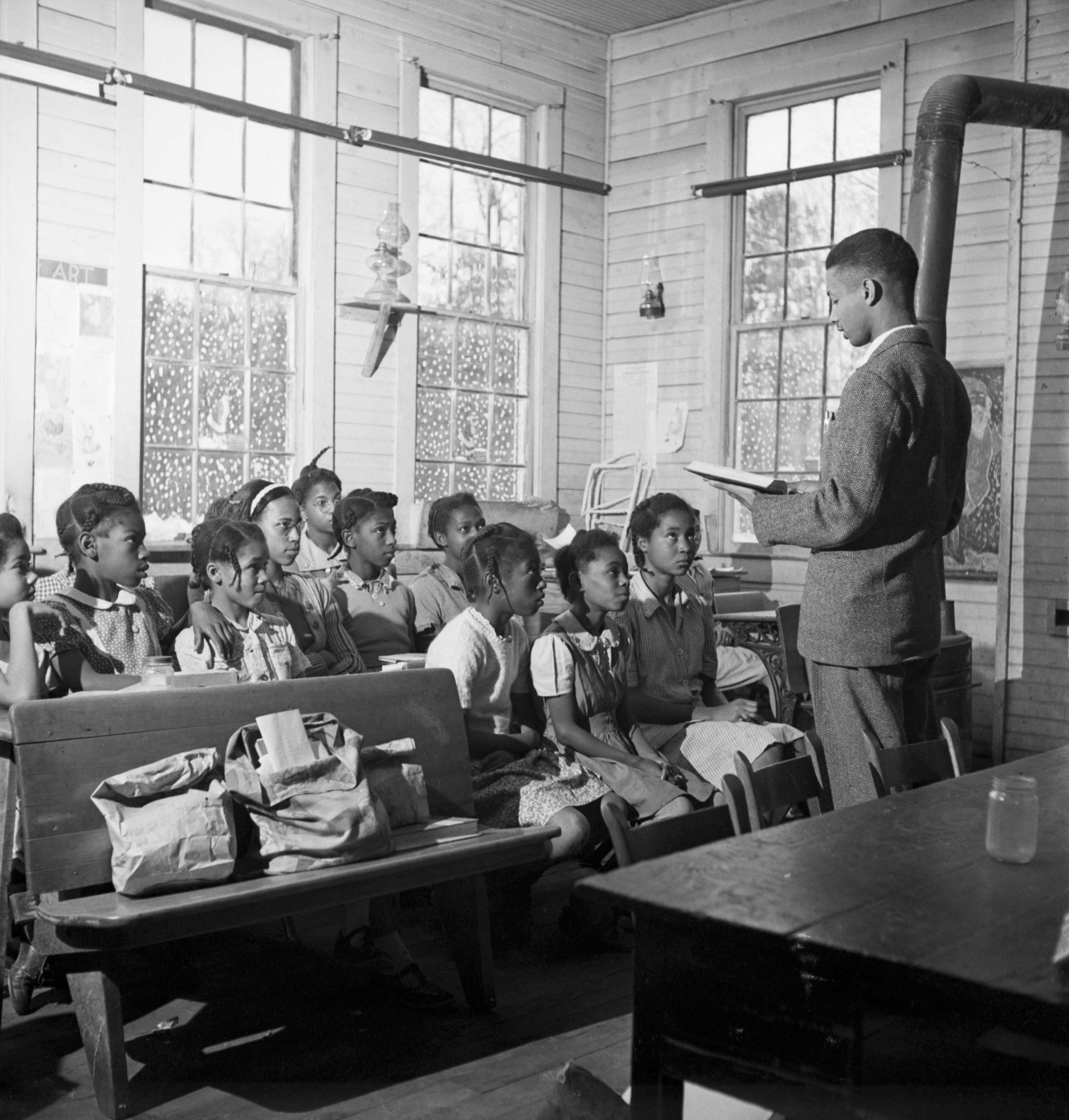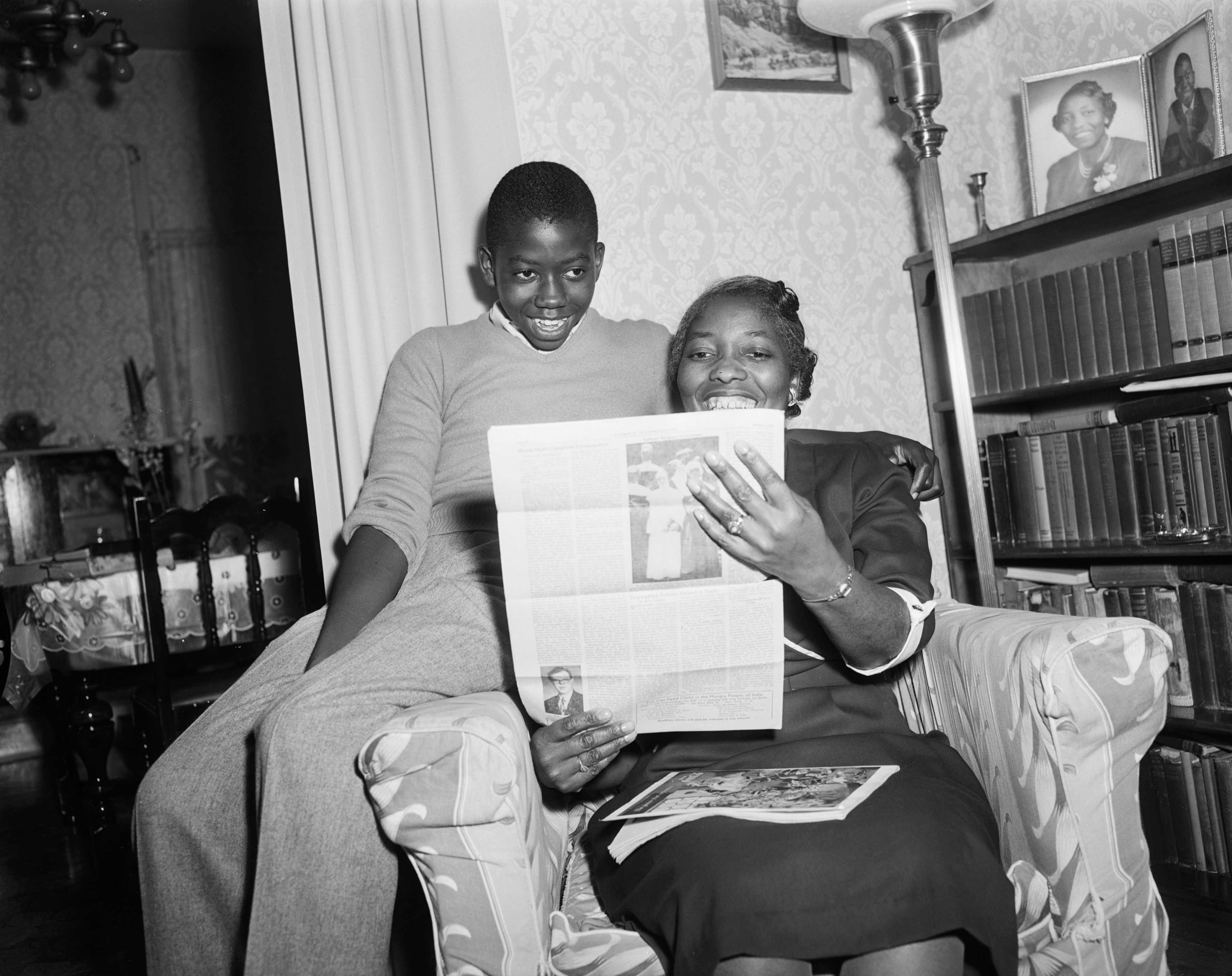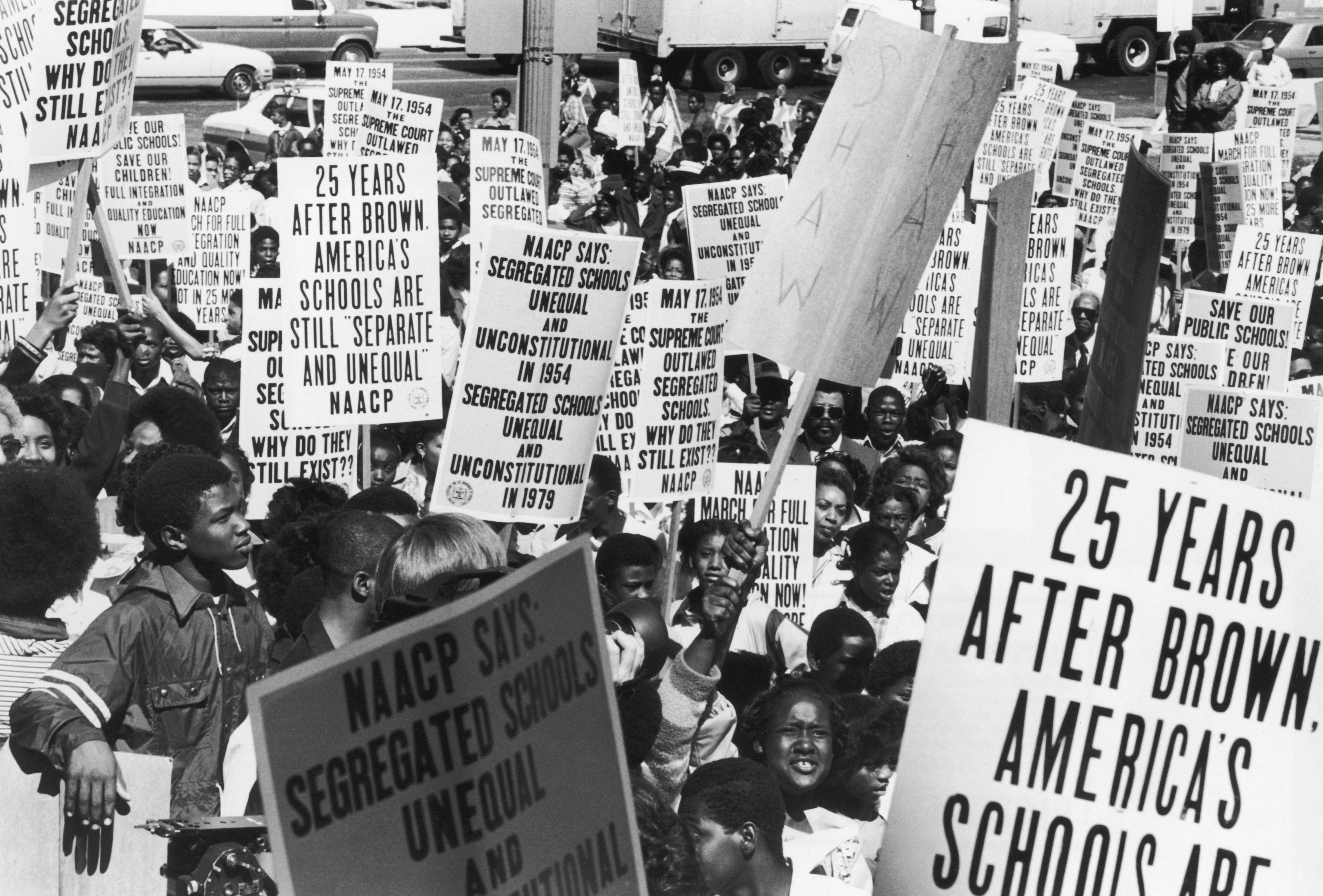Chapter 1
Challenging Segregation in the Courts
Some African Americans sought justice in local and state courts. But when lower courts provided no relief, issues like education equality and segregated transportation were taken to the highest court in the land, the United States Supreme Court.
African Americans and their allies used the court system as a powerful tool in the fight for equal rights. Changing laws had far-reaching effects that expanded opportunities and helped establish a more just society.
Litigating Civil Rights
LDF lawyers Jack Greenberg, Constance Baker Motley, and Thurgood Marshall
Rev. Dr. Pauli Murray, Esq.
In 1940, NAACP attorney Thurgood Marshall founded the Legal Defense Fund (LDF) to try cases in local, state, and federal courts. Marshall and the LDF relied on the work of lawyer Pauli Murray to help build their legal arguments. The NAACP launched many legal challenges to voting restrictions, housing bias, and school segregation. It also investigated lynchings, rapes, and other instances of racial violence and injustice.
Some of these cases laid the groundwork for landmark Supreme Court cases.
Harry and Harriette Moore Fight for Equal Pay
The Moore family, ca. 1931
The Moores’ house after the bombing
As field secretary for the National Association for the Advancement of Colored People (NAACP) in Florida, Harry Moore lobbied for better schools, Black voting rights, and an end to lynching. In 1937, with the NAACP’s assistance, Moore filed a lawsuit seeking equal pay for Black teachers, the first lawsuit of its kind in the South. Starting in 1943, Harry Moore sought to investigate every lynching in Florida. In 1946 he and his wife Harriette were fired by the Brevard County, Florida, school system for demanding better pay and for their civil rights activism.
On Christmas Day 1951, the Moores were killed in a bombing at their home. The bombing occurred after Harry Moore began investigating the police killing of two African American prisoners. Harry and Harriette Moore were the first prominent civil rights leaders to be killed since World War II.
Freedom never descends upon a people. It is always bought with a price.
Harry Moore
Mack Ingram Charged with “Reckless Eyeballing”
Mack Ingram (left) and his attorney Robert H. Carter
Mack Ingram’s trial
Mack Ingram with attorney Ernest Upchurch
In 1951, Mack Ingram of Yanceyville, North Carolina, was put on trial, convicted, and imprisoned for “reckless eyeballing”—looking at and frightening a white woman from 50 feet away. At his first trial Ingram was found guilty of assault and sentenced to two years’ hard labor.
The NAACP helped Ingram appeal the decision, but an all-white jury found him guilty again. He was given a six-month suspended jail term and five years’ probation. Ingram’s sentence was eventually overturned by the North Carolina Supreme Court.
Fighting School Segregation
Nettie Hunt and her daughter on the steps of the U.S. Supreme Court
Opinion, Brown v. Board of Education of Topeka
For more than a decade, Charles H. Houston, Dean of Howard University Law School, led a team of lawyers that brought school desegregation cases in Delaware, Kansas, South Carolina, Virginia, and the District of Columbia.
After Houston’s death, Thurgood Marshall argued a joint appeal of these desegregation cases before the U.S. Supreme Court in Brown v. Board of Education of Topeka. On May 17, 1954, Chief Justice Earl Warren’s unanimous decision determined that racial segregation in schooling violated the 14th Amendment’s Equal Protection Clause.
The Supreme Court’s decision in Brown v. Board of Education was a major victory for the Civil Rights Movement.
A child born to a Black mother in a state like Mississippi . . . has exactly the same rights as a white baby born to the wealthiest person in the United States.
Thurgood Marshall, 1988
The Death of John C. Jones
John C. Jones with his wife and child
John C. Jones death certificate
In 1946, World War II veteran John C. Jones of Louisiana and his cousin Albert Harris Jr. were arrested on suspicion of trespassing in a neighbor’s yard. They were taken to jail, beaten, and released. As they left, they were seized and beaten again. Jones did not survive this beating.
Both the NAACP and Justice Department investigated the killing, and the Justice Department brought federal criminal charges against six men. But a local jury found the accused men not guilty, and no one was ever punished for the crime.
Jones’s case was the first time the federal government had prosecuted anyone in Louisiana for the death of an African American.
The Rape of Gertrude Perkins
Gertrude Perkins reports her attack
In 1949, while walking home from a bus stop in Montgomery, Alabama, Gertrude Perkins was forced into a car by two white police officers. She was then taken to a secluded location where she was raped. Though Perkins’s attackers threatened to kill her if she reported what happened, she told her minister, who brought the story to a radio newsman.
Local activists, including NAACP branch secretary Rosa Parks, pressured the Montgomery police to investigate the case and make arrests. African Americans, angry about the charges, pressured prosecutors and were able to secure a grand jury hearing. Still, no formal charges were brought.



